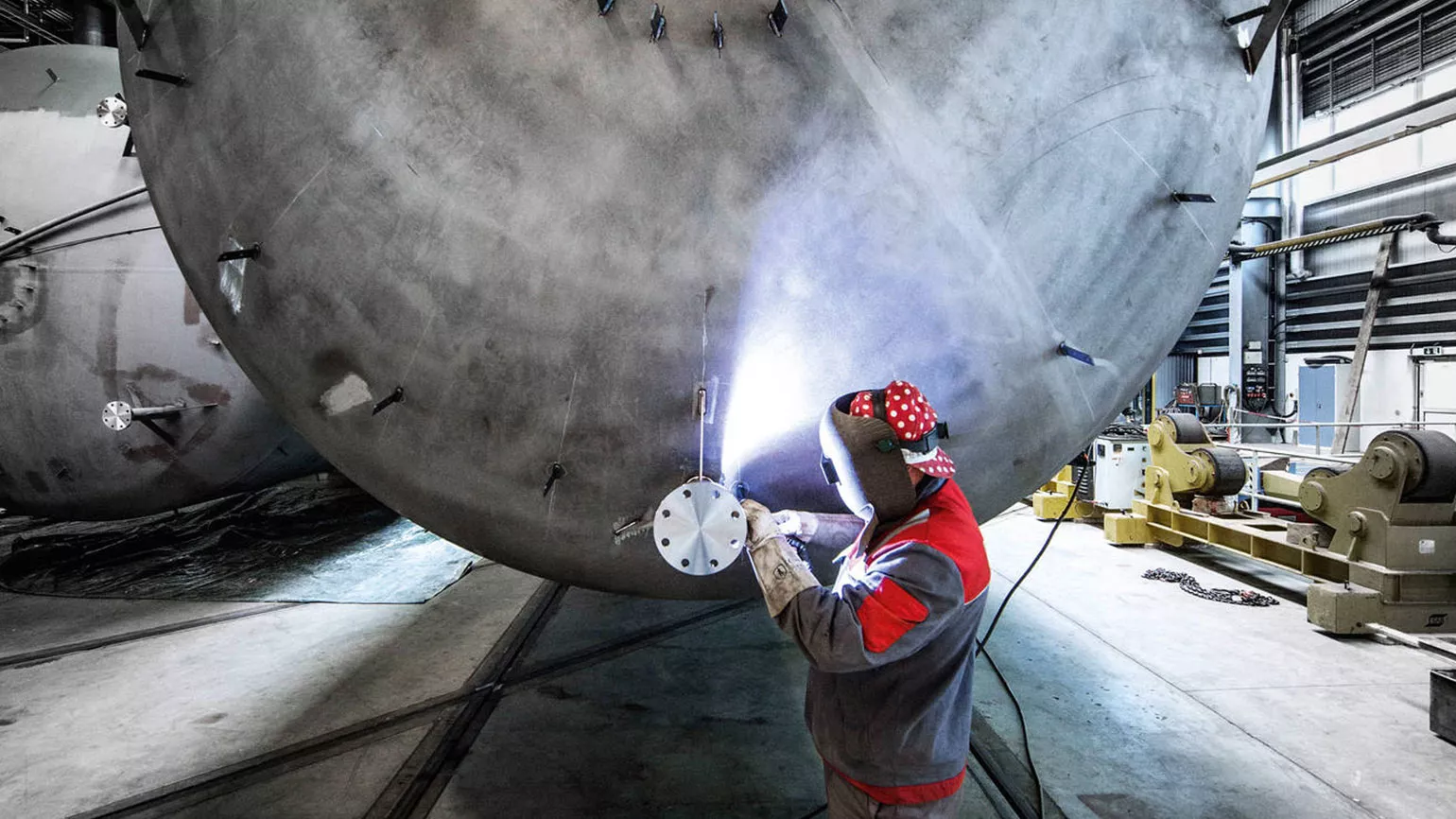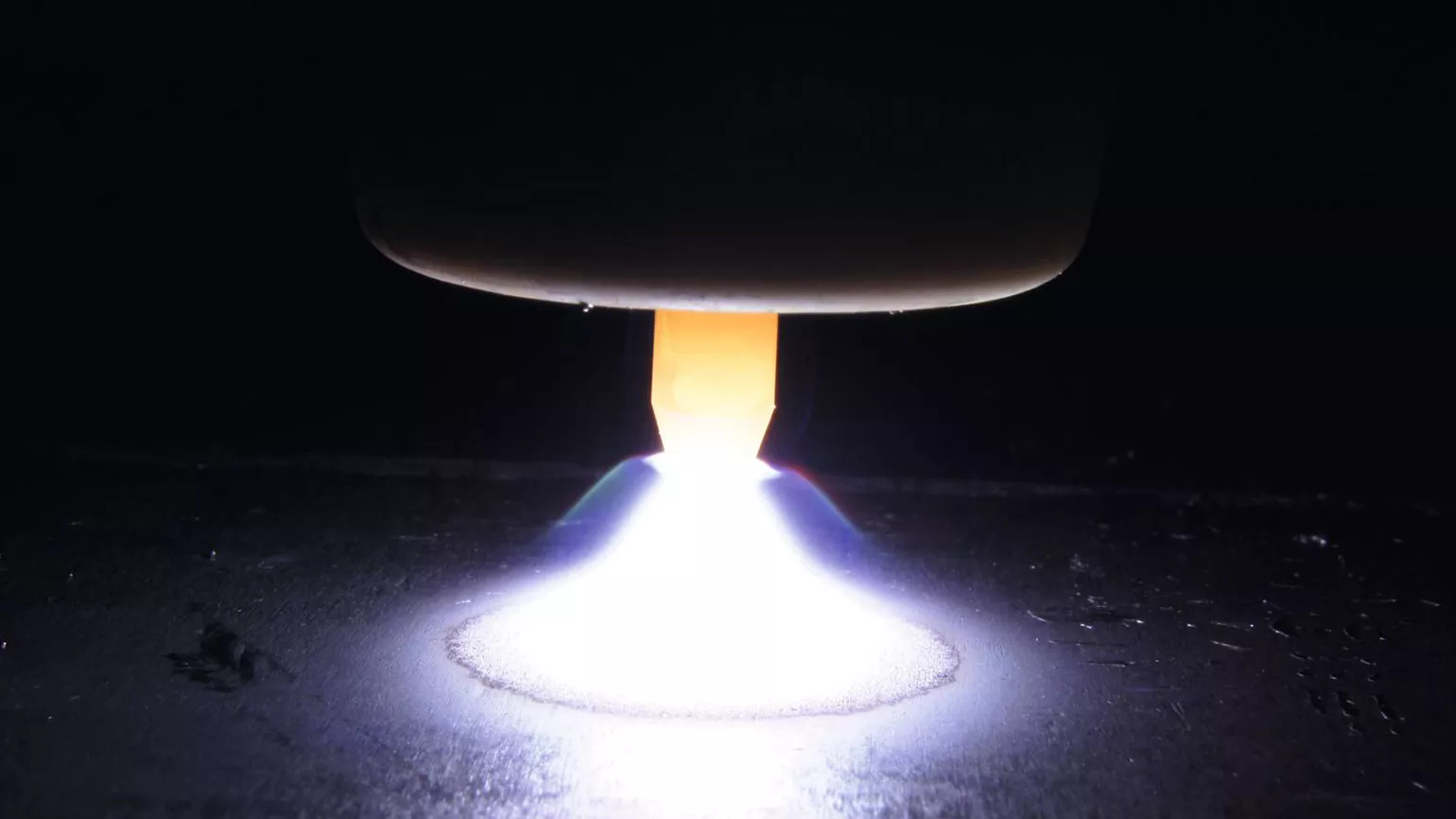TIG welding:an “old” welding process is back in the limelight
OUTSTANDING MECHANICAL AND TECHNOLOGICAL PROPERTIES
Due to the inert protective gas shield, there are no chemical reactions with the liquid weld pool. From a metallurgical perspective, this brings certain advantages. For one, it allows ultrapure weld seams with exceptional mechanical and technological properties to be produced. For special materials or where there are specific weld-seam requirements, TIG welding is therefore the first choice. The process is also characterised by a concentrated and stable arc; a smooth, even and slag-free weld seam; and spatterfree welding behaviour in almost all positions – all essential prerequisites for maximum seam quality.
The TIG process is used in areas such as lightweight construction in the automotive industry, where aluminium alloys are commonplace. Manufacturers not only need to weld profiles of different thicknesses together, but also together with sheets to form self-supporting constructions. In railway carriage bodies in particular, profiles of different thicknesses and with numerous sudden changes in the profile thicknesses are often welded in one weld seam, depending on the design. In addition to these high-load weld seams, countless other short weld seams must be produced without start porosity and end-crater cracks: requirements that are best met manually using the TIG welding process.
WORK EFFICIENTLY AND OPTIMISE PROCESSES EASILY
The excellent practicality of equipment from Fronius allows for efficient and effortless working, as both the hosepack and the welding torch are robust and lightweight. The durability of the individual components additionally guarantees maximum cost-effectiveness. A further advantage sees welding parameters such as current and voltage being digitally recorded for each individual weld seam. This allows the user not only to document the quality of every seam and monitor process stability, but it also creates an extensive database for continual analyses to optimise the welding process. To further improve TIG welding, Fronius is constantly honing and refining its equipment and processes. The focus here is on networking and digitisation functions, an even wider scope of application, greater ease of use and higher deposition rates.
MORE CONNECTIVITY FOR TIG WELDING: THE MAGICWAVE 230i
The call for greater connectivity is also getting louder and louder for manual welding devices. As a result, Fronius has developed the new MagicWave 230i TIG power source. It is the first power source from Fronius that communicates with other devices via Bluetooth, WLAN and NFC technology, and can be networked with them. USB ports also allow for software updates to be installed easily and for welding data to be documented. Progress has also been made in terms of hardware. The intelligent highfrequency (HF) ignition ensures perfect ignition properties, while the innovative PFC (Power Factor Correction) technology ensures that the devices are extremely energy efficient. An improved, compact cooling unit serves to further extend their service life. The MagicWave 230i is available as a multivoltage version. Using the Fronius Power Plug – a waterproof, lockable plug connector on the rear of the power source – the mains cable or plug can be changed quickly and easily depending on where the device is being used. This means it can be used anywhere in the world – even with different mains voltages. The MagicWave 230i is also generator-compatible and offers overvoltage protection up to 400 volts, meaning it is portable and can even be used efficiently with unstable grids. The robust housing extends its service life and offers effective protection against damage.
Neither has the MagicWave 230i’s operating concept escaped the attention of the Fronius engineers. Thanks to its multilingual concept, the MagicWave230i is very intuitive to use. The user can also easily retrieve and set their most important welding parameters with the aid of a favourites button. Another bonus is the redesigned welding torch. An ergonomic grip combined with a torch changing system as standard increases comfort and convenience, and allows for even more precise handling. A ball joint decouples the welding torch from the highly flexible hosepack and prevents twisting. The integrated, high-performance LED illuminates the seam area efficiently, leaving the welder to concentrate entirely on their primary task: the perfect weld seam.
ARCTIG SIGNIFICANTLY ACCELERATES TIG WELDING
With the modified TIG process, ArcTig, Fronius has in its portfolio another innovation for mechanised joint welding. Thanks to a special welding torch, the TIG arc can be focused in a targeted manner and its energy density significantly increased, allowing users to weld up to ten-millimetre-thick, high-alloy sheets and pipes – without extensive seam preparation, at up to double the speed and yielding extraordinary quality. Alongside the significantly higher penetration depth, this makes the otherwise rather slow TIG welding process interesting from an economic point of view: welding times can be reduced by up to 80 percent. ArcTig has other advantages too. Its operation is similar to TIG welding: just a few parameters need to be set, the main parameter being the welding current. Welders can use standard TIG electrodes, which can be easily changed and re-ground as necessary. The free end of the electrode can be adjusted, providing better access to the weld seam.


